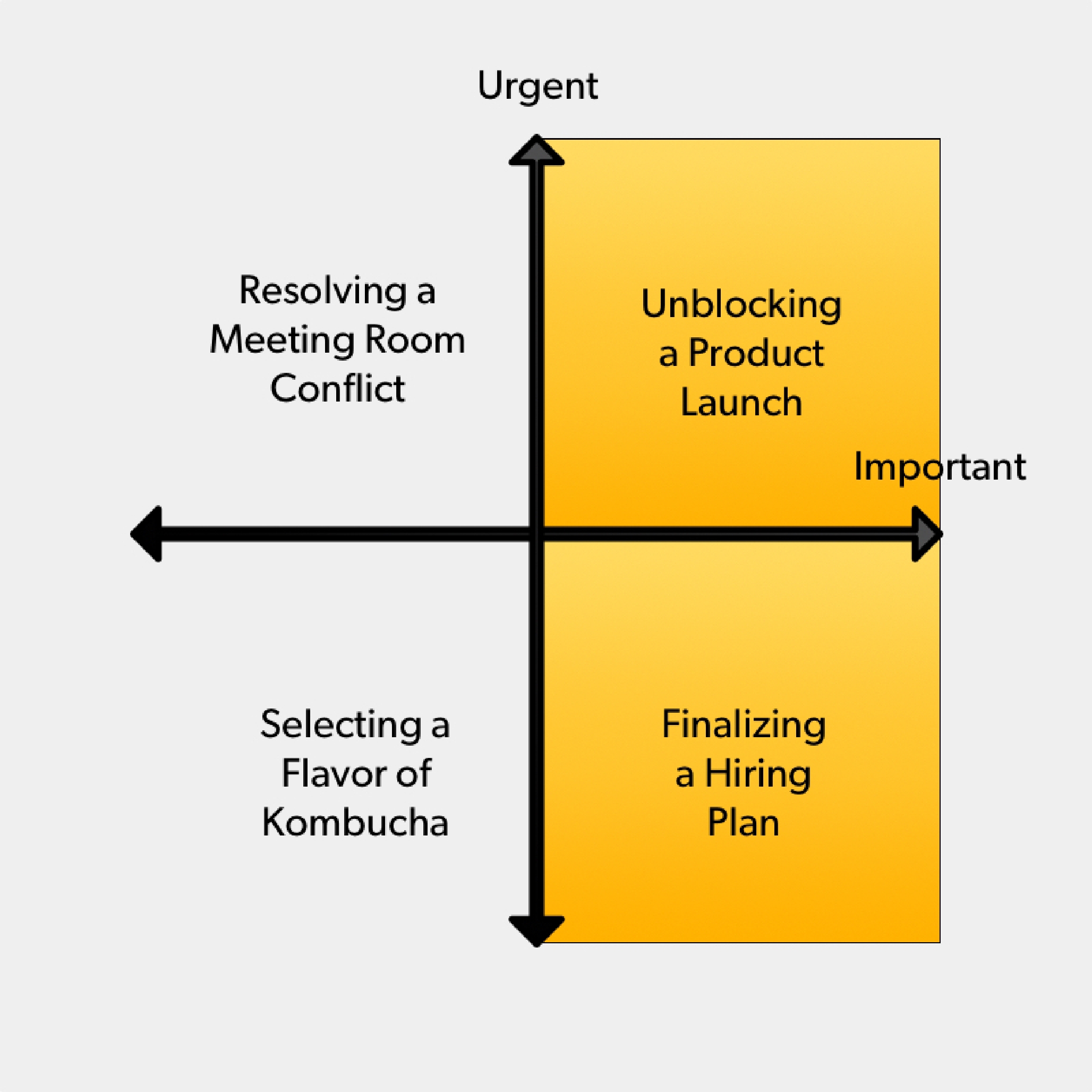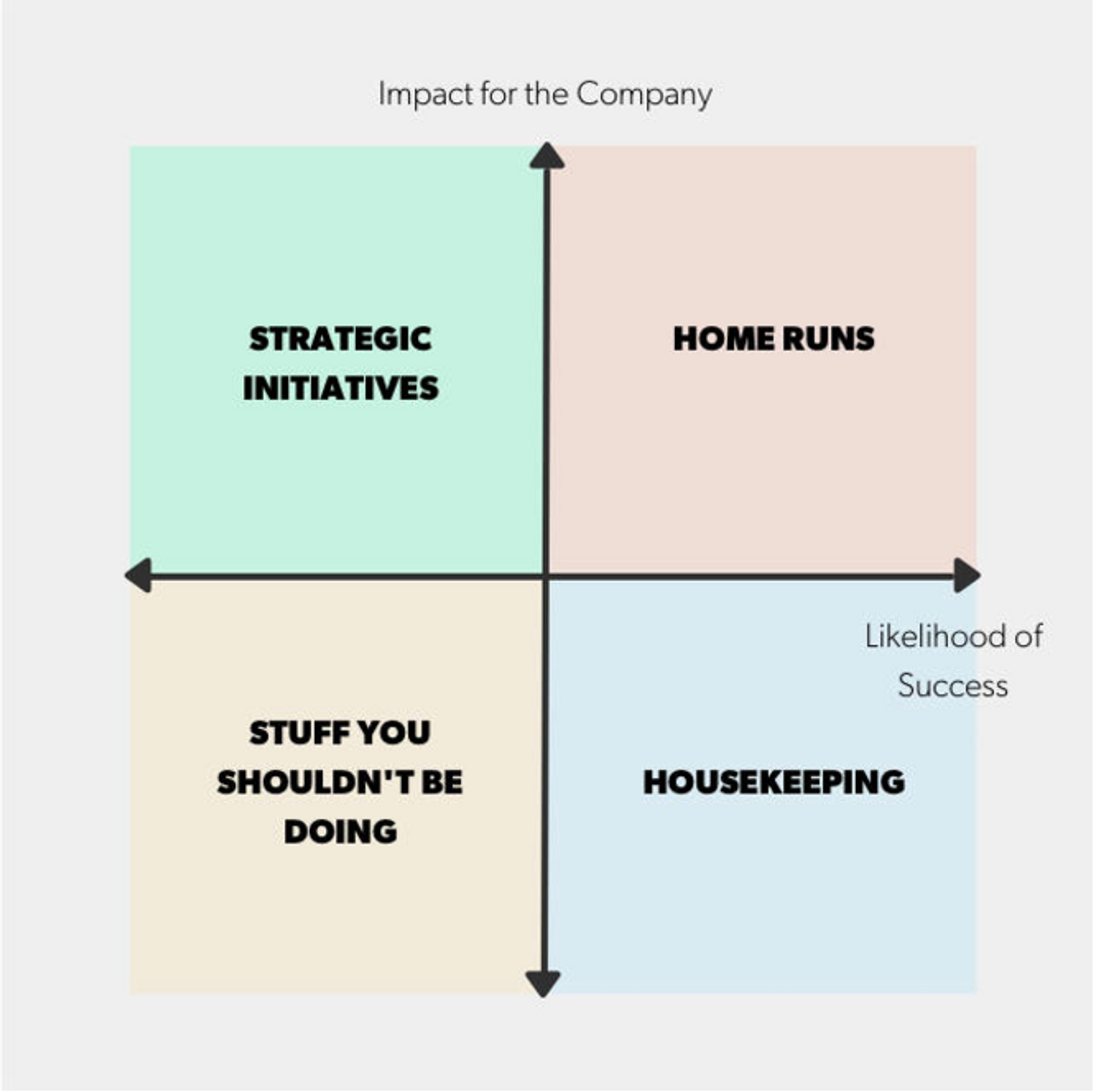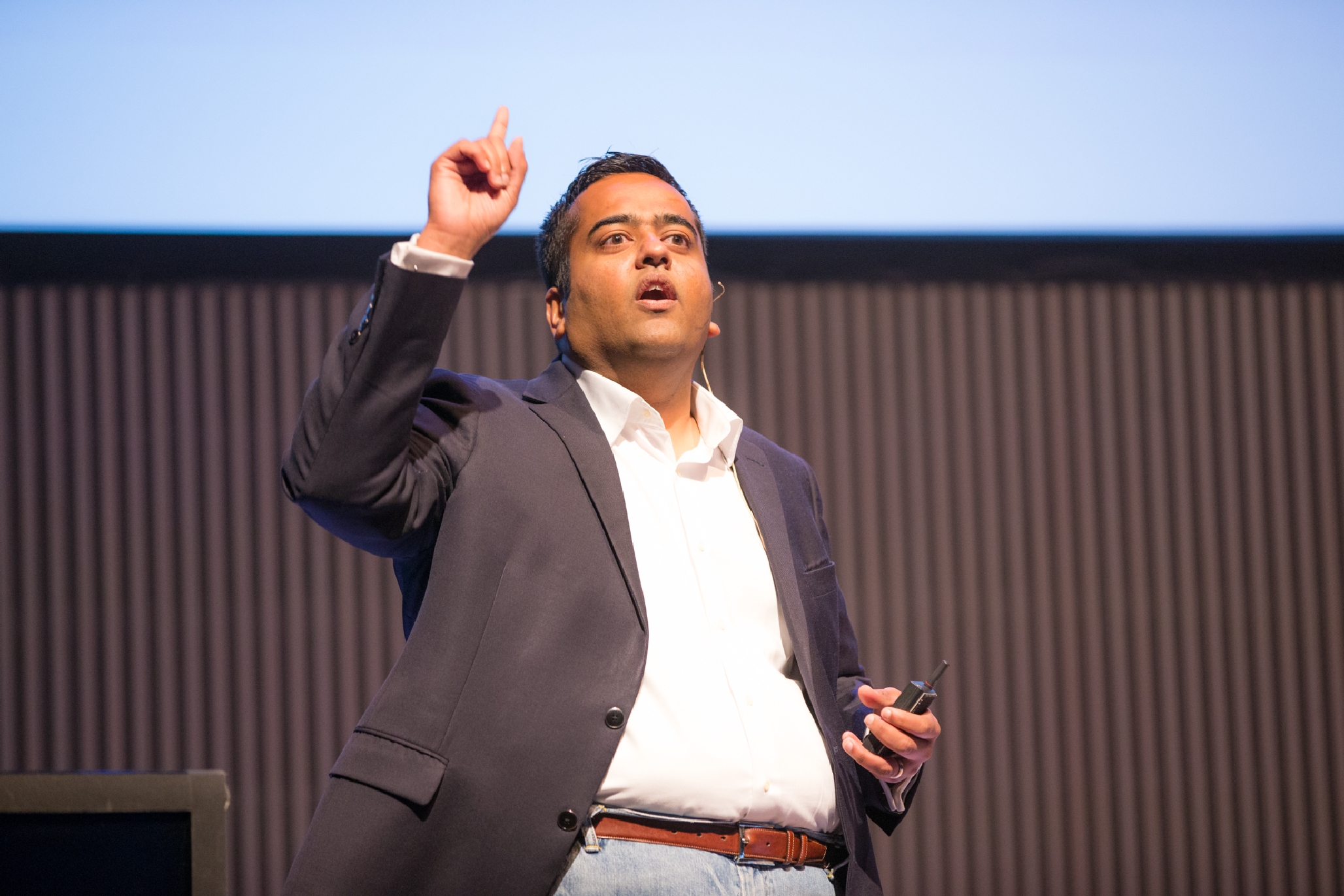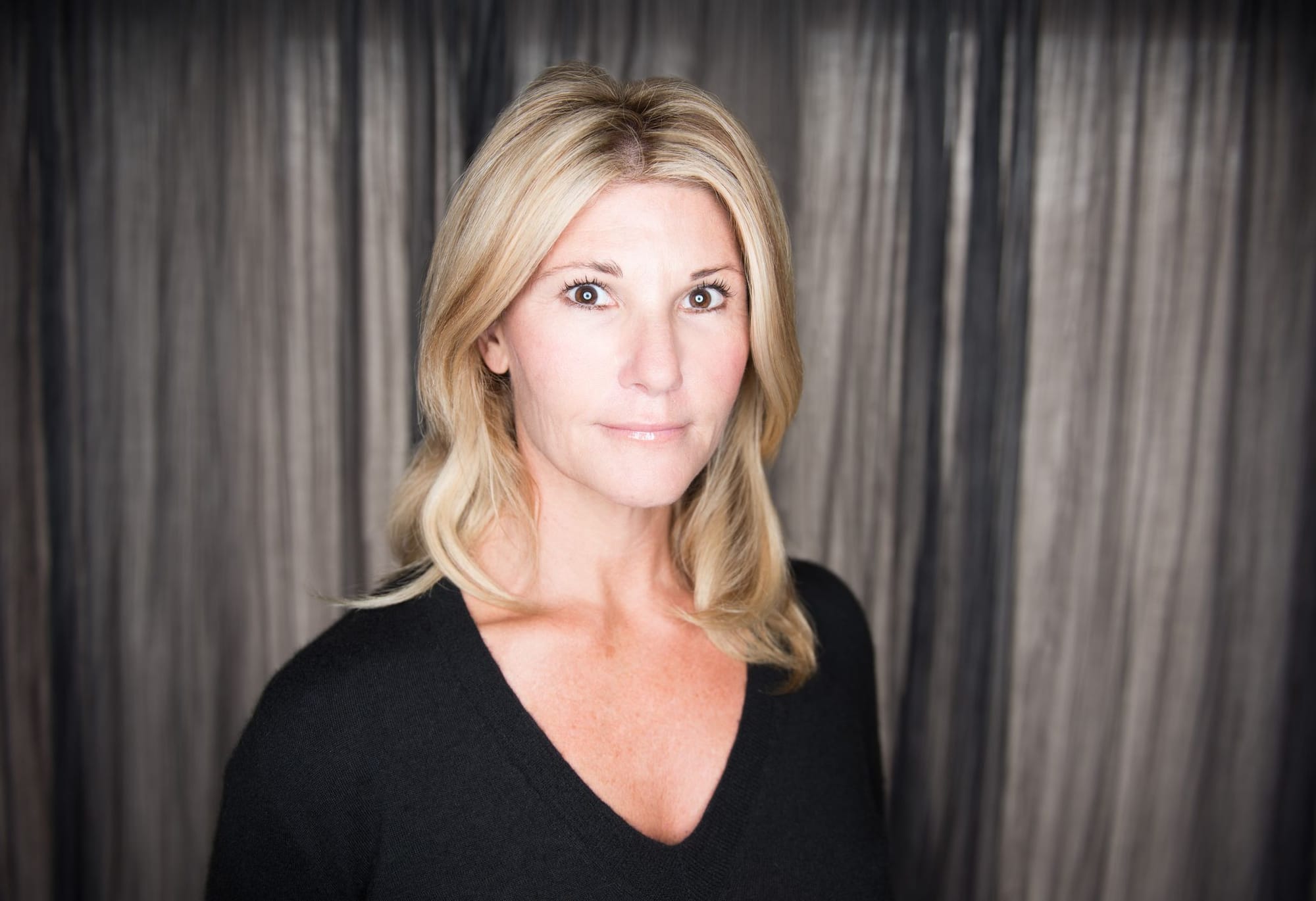At this time, The Review traditionally reflects on the extraordinary people we’ve interviewed and long-form articles we’ve published over the last year. Previously, we told you about former Twitter Engineering Director David Loftesness and Candor co-founder Kim Scott — both of whom had very popular articles that were shared widely, led to forthcoming books and, in one case, launched a new startup.
But as one of this year’s Review subjects, Khalid Halim, reminds us: it’s not just about what’s said, but what’s heard. The powerful, untapped knowledge that we seek to help leaders unleash is also gauged by how exactly it helps people transform the way they build and grow companies.
So when one of our readers sent us the following note last year, we were delighted. It was in response to Expensify CEO David Barrett’s article on user acquisition, and specifically about a tactic on new user welcome orientation flows. Here’s what the reader wrote:
- We were sending post-sign-up emails generally, but after reading what Dave Barrett wrote we made two key changes:- We changed the post-sign-up email to go out 20 minutes after sign-up vs. immediately.- We updated the content to mimic what Dave wrote in his email, so it appears to be more human vs automated.This resulted in us getting about 12% responses to our sign-up emails vs. before when it was around 5%. This also resulted in us chatting with a large customer of one of our biggest competitors as they responded to the email, which has lead us to being in a sales cycle with them now! So I can say there is direct impact of this change to our sales funnel!
We appreciate all feedback on Review articles, but we were especially grateful for his note. He was as specific on the impact of the advice, as Barrett had been when sharing his tactic. More than that, he found the article, tested out the tactic and wrote us months after the piece had been published — the very reason why we continue to seek out and feature enduring, evergreen advice.
So as we begin a new year, we hope you find relevance and resonance in the following list of the 30 most impactful and incisive advice culled from our articles last year. We also hope that you, too, will test out the tactics we’ve published or will share in the year to come. Let us know if — and how — they help you. We look forward to it!
1. Start at the bottom of CVs to hire originals.
Bestselling author and Wharton professor Adam Grant has spent years researching and interviewing originals. In his book Originals, Grant shows how to identify, foster and nurture nonconformists — a skill he believes is imperative for leaders at early-stage companies to master. One tip is to review a resume in reverse order, starting above the bottom margin of the last page, where there’s typically a line about a candidate’s hobbies, travels or interests. “Look for people who have multi-functional backgrounds, multicultural experience and wide interests. Most hiring managers focus on depth of experience, but breadth is critical for creativity,” says Grant. “In a study comparing all the 21st century Nobel-Prize-winning scientists with their colleagues from their era, the breakthrough scientists were significantly more likely to be involved in the arts than the latter: twice as likely to play a musical instrument, seven times as likely to draw or paint, twelve times as likely to write fiction or poetry, and 22 times as likely to perform as dancers, actors or magicians... Originals are fusions of their varied interests. They are multidisciplinary makers, thinkers and doers.”
Originals are constructive contrarians. They're not just pointing out that the emperor has no clothes; they're also tailors.
Frederique Dame is nothing if not resilient. She was 24 when she moved to the U.S. to work, shaking with fear as she handed out resumes at a job fair. She was later laid off and forced to scramble to find a way to stay in the country. Now, she’s been a product leader at Uber, Photobucket and Yahoo!. Her advice on crafting your life and career trajectory: first, acknowledge that the two are deeply linked. Second, optimize for what will make you happy, not just status. One way to do this is to choose teams and managers who will be great to work with — regardless of whether the company is a name-brand one. Finally, practice being bold and elegant. “What if you just decided that you were going to be fine no matter what? Being daring is all about trusting yourself to handle the results,” Dame says. “In tech, people don't think about acting elegantly. To be elegant is to be deliberate, respond gracefully, take things lightly — to move through the world with positive purpose. It’s having a soft touch and tough resilience at the same time. And, in my experience, it’s an incredible secret weapon.”
When you find yourself thinking, "Oh I can't go after that..." or “That’s a crazy risk...” immediately append the sentence: “You’ll be fine if it doesn’t work out.”
3. Triage these four types of troublemakers.
For the last 20 years, bethanye McKinney Blount has led technical teams at a range of companies, from tech titan Facebook to Second Life creator Linden Lab to music recording company EMI. She was recently the VP of Engineering at reddit and has founded two companies: Cathy Labs and MailRank, which Facebook acquired. Over her career, Blount’s seen both sides of the coin with troublemakers: supremely talented and opinionated people who can also be brash and bullheaded. They’ve largely fallen into four archetypes: the hermit, the nostalgia junkie, the trend chaser and the smartest person in the room. Don’t forget that your founders are the first troublemakers — they often had to mix things up to propel their startup into the world. So when you’re managing troublemakers, remember that their spirit is part of a startup’s DNA, but must be calibrated according to the stage of the company. Rarely are people intentionally destructive troublemakers. There will be times when you won’t be able to decode them, but knowing how to recognize and troubleshoot them will save and benefit the organization and them — and ideally both. Be able to identify the four types of troublemakers. Go into conversations with them rooting for their relevance and redemption.
4. Be hyper-aware of the observer effect.
In a novel application of quantum mechanics and Schrödinger's cat, Instagram’s Head of Engineering James Everingham encourages the “quantum manager” to not insert herself in her team’s projects — the equivalent of opening the box to observe the status of Schrödinger's cat — to allow as many possible paths to success as possible. "As the founder of the company, I didn’t want us to fail. As a human being, I wanted affirmation that my idea was a good one. As a quantum manager, I bit my tongue. Ultimately, I didn’t engage in the brainstorming process because I knew my team would latch onto anything I offered. Instead, I just told them what winning would look like: a 300% increase in user engagement seemed like a lofty goal, but I pitched it anyways. A few days later, my team returned with a solution that I could never have imagined, and the results were stunning,” says Everingham. “Though their strategy was remarkable from an engineer’s perspective, what I learned from the exchange as a manager turned out to be even more valuable. By not offering my own idea, I enabled the creation of a better one. By not suggesting a destination, we all ended up somewhere extraordinary — a place I didn’t even know we were going."
Being a good manager is not about avoiding failure — it’s about enabling as many different paths forward as possible for as long as possible.
5. Build for the high-expectation customer.
Here’s a common trap founders fall into: gain users at any cost. You’ve got to show growth in those DAU numbers, right? Think again. So often, founders chase after daily active users, monthly active users and retention numbers. “They believe that appealing to every customer is one way of solving these problems,” says Julie Supan, who has counseled Airbnb, Dropbox and Thumbtack on branding. That’s the wrong approach, Supan cautions. Instead, focus on the high-expectation customer (HXC). She’s your ideal user, “the most discerning person within your target demographic. It’s someone who will acknowledge — and enjoy — your product or service for its greatest benefit,” Supan says. “If your product exceeds her expectations, it can meet everyone else’s.” Supan took this approach to Airbnb, whose HXC is a good global citizen who wants to travel like a local. Once you nail down the HXC, get the entire company on board with understanding these customers, use their language to engage with them and continually survey them to stay on top of their evolving needs. The HXC serves as a valuable touchstone to ensure that you’re growing in the right direction and to validate — or invalidate — your action plan. “Your users will understand the product, and know that it’s meant for them. You’ll slash your cost of customer acquisition and enjoy the benefits of a clear roadmap,” says Supan. “If you do the work, they’ll lead you to consensus about what your company is—and what it isn’t.”

6. Design product teams around outcomes, not features.
Jonathan Golden, Airbnb’s very first product manager and now Director of Product, knows that flexibility can get you far in his line of work. When diplomatic relations were reestablished with Cuba, Airbnb was eager to operate in the country. Under Golden’s leadership, Airbnb created a cross-functional team, composed of PMs, designers, engineers and data scientists, that would spearhead Airbnb’s expansion to Cuba. In two months, Airbnb’s infrastructure was up and running — and almost as quickly as the team formed, it disbanded. The key? An elastic product team: a modular unit driven by a clear company objective as opposed to a functional area. “A lot of people call me and ask how they should structure their product organizations. I always tell them to do it based on outcome. If you do it based on features, then you’re going to be perpetuating those features whether they’re useful or not.” Convene and disband modular, elastic teams that expand and contract to serve a pre-determined outcome.
7. Practice abundant thinking. These six concepts will help.
It’s not just skill you need — it’s mindset. Your performance is 100% tied to your attitude, says sought-after executive coach Katia Verresen, who counsels leaders at Facebook, Stanford, Airbnb, Twitter, and a number of prominent startups. The ideal attitude is what she calls abundant thinking — a mindset that gives you the creative agency and grit to reach your vision — and, on a daily basis, to design your own life. You can do this through Verresen’s six-step process: noticing, neutrality, priming, self-compassion, generosity and gratitude. The brain can only absorb so much. When you’re hyper-focused on a task or an idea, you miss things. “You’re not crazy and other people aren’t stupid. It’s just that our brain is designed to see what it’s already looking for and believes. For example, if your belief is ‘it’s impossible’ or ‘I can’t do it,’ then anything that contradicts you will get thrown out,” Verresen says. So think of what awaits you if you can break away from your brain’s default setting: significant creative and competitive advantages. “When you devote time and energy to noticing, new doors open. Serendipity accelerates,” she says. “You feel like the universe is conspiring to support you. But really, you're just not limiting yourself.”
8. Make difficult decisions with the SPADE framework.
Gokul Rajaram oversees Caviar at Square now, but an encounter with Google’s CEO Eric Schmidt fundamentally changed the way he makes decisions. Then a product management director for Google AdSense, Rajaram was in a meeting where Schmidt asked who was responsible for a decision that was the subject of heated debate. Three people raised their hands. Schmidt promptly ended the meeting, telling them to come back once they’d figured out who was in charge. Rajaram has since developed a framework for ownership and making hard choices. That starts with recognizing when you’re up against one. For that, use his chart (below), which sorts decisions by importance and urgency. Then apply the SPADE framework: determine the setting of the what, when and why of the decision, then assemble the right people. Following that, outline alternatives. Finally, decide and explain your decision. “I bet you if you survey people at your company today about decision making and their level of happiness, most will say that they don't understand how decisions are made. This framework allows you to articulate each stage of the process broadly to a company,” he says. “I firmly believe that making high quality decisions can fundamentally transform the way we work.”

9. Hire for CX before you have customers.
WiFi system startup eero put CX at its very core thanks to its CEO and co-founder Nick Weaver and Head of Customer Experience (CX) Dana Lindsay. Both have worked closely to understand and delight customers: Weaver co-founded incubator StartX and worked alongside startups at Menlo Ventures, while Lindsay trained and scaled remote teams for digital publishing platform Inkling. At eero’s launch, they kept a single question in mind: tech support is everyone’s worst nightmare. How do we do it so differently that we reset expectations? While most founders tack on customer support as an afterthought, Weaver purposely integrated it from the start. Startups should consider following eero’s lead by establishing a dedicated team to gather feedback for a beta and bringing aboard a first CX hire at a stage when most startups are solely focused on engineering. “Receipts are the first support tickets,” Weaver says. “Customers may not have asked for help yet, but the relationship has begun.”
10. Find, vet and close top PMs from these five profiles.
Todd Jackson has been a part of product organizations across some of the best companies in the Valley, from Google to Facebook to Twitter, after it acquired his own startup, Cover. Now VP of Product and Design at Dropbox, he’s worked with hundreds of product managers — and hired dozens — over the course of his career. He’s found that the best product managers do three things: articulate what a winning profile looks like, can rally the team to build it and iterate on it until they get it right. Though all high-performing PMs must do hit the mark in these three areas, they don’t all have the same profile. Jackson has identified five main PM archetypes that he knows personally — and which show the breadth of diverse backgrounds that can make great PMs: the classic choice, the rookie prospect, the management consulting refugee, the engineer/designer-turned-PM and the marketer/biz-dev-turned PM. “It’s important to look for diverse experiences and backgrounds,” Jackson says. “Your users and customers are likely a diverse set of people, so your employees should be too. This can actually be a big competitive advantage over other companies that think too rigidly or homogeneously about their hiring.”

11. The deeper the context, the better the advice.
Hiten Shah is the co-founder of three SaaS companies: KISSmetrics, Crazy Egg and, most recently, Quick Sprout. He's also an angel investor and advisor to more than 50 companies. Given his many roles, he’s often asked for advice, which he does three times daily on average — and up to eight times a day. In recounting the most impactful advice he’s received, he realized that 90% of what made the advice so effective was not the counsel itself — but the context in which he couched it. Advice givers should always reframe questions to orient around the advice seeker, not their own expertise. And, after offering a spread of data points as context, advice seekers should always ask what they should do next. “All good advice tips people toward action, not options,” says Shah. “You may think all you need is advice. Practice is what you need.”
12. Beat burnout with these frameworks.
To compete with the mega-salaries offered by tech giants, startups can have a card in their back pocket: a workplace that prioritizes employee sanity, says Roli Saxena, who’s no stranger to overwhelming to-do lists. From LinkedIn, she joined Clever last year to lead customer success, but the role quickly expanded to head sales, strategic partnerships and operations. Big jobs, big demands — everyone’s familiar with that. But if you want to attract and retain the right people, you need to fend off burnout before it hits your team, Saxena says. She outlines a quadrant system (below) for quickly sorting a to-do list based on likelihood of success and impact, and prescribes what to do for each category of task. For example, take the category of things you said you’d do but didn’t. “[It] usually requires an apology of some sort. Maybe it’s you telling your boss or direct report, ‘I’m sorry, I can’t do it.’” Embracing the truth here is vital. You have to be open and honest about your capabilities,” Saxena says. “To avoid burnout, empower your team to know they can do fewer things as long as they do them really well.”

13. Beat your competition by introducing unfamiliarity — a better mousetrap won't work.
Bret Taylor helped lead the team that co-created Google Maps and was CTO of Facebook following its acquisition of FriendFeed. He’s now a board member at Twitter and the co-founder and CEO of the startup Quip, which Salesforce recently acquired. Despite his startup pedigree, Taylor is acutely acquainted with being an underdog, and he shares this big piece of advice: Building a better mousetrap isn’t enough to set you apart. In fact, incumbent competitors have a number of advantages that could kill your startup, including entrenched distribution channels and consumer familiarity. Google Maps, for example, struggled to best MapQuest when it launched in 2005. Consumers just didn’t see a reason to make the switch. MapQuest already did everything they wanted even though Google Maps was a superior product. Start to dethrone incumbents by making users a little uncomfortable to make “better” matter — and users care. "In many ways, your quietest, most steadfast competitor is indifference," he says. “The bottom line is you have to build a lens to allow users to see a new world rather than features to help them see an old world better.”
14. Make recruiting an act of qualification, not an act of disqualification.
One of the findings in First Round’s 2016 State of Startups report was that hiring the right people tops the list of founder concerns. This doesn’t surprise First Round’s Tammy Han, who works with startup founders looking to hire and candidates looking — or in most cases not, actually — to get hired. She warns job candidates to beware brand-name bias, scale their search realistically and never say no to a job you haven't been offered. Create and return to a decision matrix (template below). For startups who are hiring, she advises them to inquire about candidates’ motivations directly, not to be afraid to talk money upfront and, of course, be diligent about the candidates they interview. It’s not uncommon in today’s market for an early-stage startup to interview someone from a big name like Google and Facebook — candidates who are likely well paid and enjoying meaty titles and workplace amenities. “You shouldn’t make snap judgments and disqualify purely based off of resume alone, nor should you allow yourself to be intimidated by their recent big company experience,” Han says. “If you are stepping back and not competing — that's another problem that you need to fix.”

15. Pin down price before building your product.
Consultancy Simon-Kucher & Partners’s board member Madhavan Ramanujam is the price whisperer, having consulted on the topic for Fortune 500 companies and hot startups alike. His advice: Before you even decide exactly what product you’re going to build, take a page from Porsche’s playbook and pin down exactly what people are willing to pay for it. Be militant about testing customer willingness to pay for product features, as Porche did with extra-large cupholders or six-speed racing transmissions. In the case of the hit Cayenne SUV, customers wanted the former but yawned at the latter. Porsche avoided shipping a dud by rigorously eliminating features customers weren’t willing to shell out for. While new products flop for many reasons, Ramanujam spells out the four categories of product innovation failure and how to avoid them — and cautions against putting product pricing on the backburner. “Most companies postpone pricing decisions until after the product is developed,” Ramanujam says. “They embark on a long, costly journey of hoping they’ll make money rather than knowing they will.”

16. Flex between three learner mindsets to become an adaptable leader.
Anne Dwane has been through her share of change — first joining college matching service Zinch as CEO, then becoming Chief Business Officer of Chegg after her company was acquired. Her trick to adapting to rapidly changing situations is to be a constant learner, and she’s honed in on three types of learner mindsets that you need to know to do the same: Gamer, Beginner and Growth. Gamers are able to focus and form partnerships, for example, while beginners are childlike and curious. You should be able to hire people who can adapt to these styles, and Dwane specifies her process for how to interview for constant learners. “Knowing has become obsolete,” Dwane says. “Learning has become our true currency. We’re not knowledge workers. We’re learning workers. If you aren’t actively trying to learn, no one can help you. If you make it central to your professional life, no one can stop you.”
Adaptability is all about being fixed on a goal but flexible on the details.
17. Fundraise like a surfer — plan to take on investors in sets.
First Round has built its Pitch Assist program from the vast knowledge it’s accrued by witnessing its companies raise over 1,000 rounds and $18 billion in follow-on funding. Partners Bill Trenchard and Brett Berson have gathered insights ranging from how to fix one’s timeline to ways to create a race dynamic to the many wins and sins of pitching. One critical tactic in successful fundraising is to create scarcity. As a rule of thumb, speak to no more than five firms at a given time. There’s nothing worse than the perception of an over-shopped deal, as VCs relish having the inside scoop on an exciting company. Group investors in batches to better evaluate and select them, like a surfer scanning sets of waves that move toward the shore. “Say you have a dozen partners at firms who might make a good fit. Don’t group all your top choices in the first set of five. Pick two or three of your highly-ranked VCs and round out the set with lower priority firms. Even if you’ve rehearsed your pitch, you’ll continue to refine it, so diversify your schedule to account for that learning curve,” says Trenchard. “It’s going to take some time in market to perfect the actual pitch. That said, don’t leave all your top picks until the end as they’ll be very out of sync with your process if in a later set. It’s a balancing act.”
18. Master telling these three types of startup stories.
Don Faul, COO for performance sportswear maker Athos, has led operations at Pinterest, Facebook and Google — not to mention commanded a U.S. Marine Corps platoon. But his secret to success is something decidedly un-operational: storytelling. “Whenever I meet with new leaders, I always talk about their responsibility to inspire people — to tap into that intrinsic motivation to be there and work hard,” says Faul. “We’re fortunate to work in an industry where meaningful work is getting done, and people badly want their work to be meaningful. Stories connect the two. It’s the skill every leader needs to learn.” In particular, Faul prescribes mastering three types of tales: the failure story, the good example story (to encourage good behavior) and the inspirational story. Good storytelling requires deep honesty. “Being vulnerable doesn't weaken your authority,” Faul says. “It strengthens everyone else around you.”
The right words can be so powerful. They can make you feel like anything is possible.
19. Forget technical debt. Build technical wealth.
As the CEO of Corgibytes, Andrea Goulet helps companies re-architect and modernize apps. She seen all varieties of broken systems, legacy code, and cases of technical debt so extreme it’s basically digital hoarding. When it comes to technical debt, most CTOS see the problem coming, but find it hard to convince their colleagues that it’s worth spending money to fix what already exists. It seems like backtracking, with no exciting or new outputs. A lot of companies don’t move to address technical debt until it starts crippling day-to-day productivity, and by then it can be very expensive to pay down. You’re much more likely to get your CEO, investors and other stakeholders on board if you reframe your technical debt as an opportunity to accumulate technical wealth — a term recently coined by agile development coach Declan Whelan. “We need to stop thinking about debt as evil. Technical debt can be very useful when you’re in the early-stage trenches of designing and building your product,” says Goulet. “And when you resolve some debt, you’re giving yourself momentum. When you install new windows in your home, yes you’re spending a bunch of money, but then you save a hundred dollars a month on your electric bill. The same thing happens with code. Only instead of efficiency, you gain productivity that compounds over time.”
Stop thinking about your software as a project. Start thinking about it as a house you will live in for a long time.
20. Fuse Engineering, Product and Design from the start.
Airbnb’s design team includes a former librarian, mechanic, life insurance agent, therapist and modern dancer. Alex Schleifer, VP of Design at Airbnb, is calling for a more receptive startup environment and defined career path industry-wide for design professionals. One way forward is to create an EPD — engineering, product and design team — from the start. Some tech companies have adopted this approach, as it has involves and aligns each function from a product’s inception to its launch. For example, a working group for a new feature, product marketing or user feedback will involve at least one member from each of the three teams. This coalition not only assembles the key builders of the product, but, as a byproduct, it also formalizes the professional pathways that a person who wants to create a product can consider. The team should resemble a three-legged stool, in which each leg represents one of the three areas that helps build a product. If it’s done from the start (Figure A), each function can grow in parallel and proper ratio (Figure B) as the broader organization scales.

Without those strategies from the onset, you’re bound to create an unstable stool down the line, which, in this case, is a shaky product. That might be because no design role was developed at the onset (Figure C) or was added on after the product — and the engineering and product management teams — has already matured and grown (Figure D).

Designers, if we constituted a nation, who would we put on our currency?
As trendy and gabbed-about as “content marketing” is these days, Contently CEO Joe Coleman says he’s continually surprised by how many companies of all sizes (including the Fortune 500) don’t know what to write, what to track, or what their objective is, even as they pour millions into content production. In many cases, companies branching into content are tempted to run before they can walk. “They think, ‘Okay... content strategy. We need a blog, social media, an email list, all at the same time. Go!’” he says. Instead, talk to existing companies as your first step. “Get your sales team involved. Have them constantly share the questions they get, or the challenges they people have, and build a heatmap. Really mine that data to figure out what you should be writing about,” says Coleman. “You have to be really honest with yourself at this stage,” Coleman says. “It’s not just whether you should and can produce content. It’s whether you can do it without half-assing it. Otherwise, you can do real damage to your brand.” Part of this process might be figuring out you don’t need content at all, or that it’s not the right time. Audience analysis should precede bringing on someone to run content marketing full time.
If you're not obsessed with creating really great premium content, you're wasting your time.
22. Don't try to 10x the output of each team. Put many 1x teams next to each other.
Reddit’s co-VPs of Product Alex Le and Kavin Stewart share extensive experience building products at every single stage of company life. They’ve both seen a lot succeed and a lot go south. One critical juncture is the radical shift from product/market fit into growth — an inflection point that steamrolls far too many promising startups. “As a company gets bigger, it’s scary to watch how most fall into longer and longer iteration cycles,” says Le. “Someone needs to be paying attention to this. Like, literally collecting data on how long every release is taking. How long releases of similar features are taking over time. How many features are getting launched per sprint, per quarter, etc. You have to know how long it’s taking you to get things done so you can make sure it stays relatively the same even as you add more people and projects. The goal should really be to parallelize more iterations all taking place at the same time.” Companies like Facebook have done a heroic job of keeping iteration cycles short. “They do that not by adding a bunch of people to a project. You want many mini projects all producing learnings at once,” says Stewart. “And for that, you need the healthy communication that comes with focusing on product ops.”
23. Decode your customers with these behavioral economics tricks.
People are wildly unpredictable. They’ll pay for a $30 cab ride but not a $2 app. You could build or break an entire company based on whether you correctly executed customer development — the science of establishing a market that is willing to purchase your product. To truly understand what customers want, you need to delve into behavioral economics, which is Cindy Alvarez’s secret sauce as a customer-base rainmaker at Yammer and now Microsoft. “For almost all startups, the greatest risk isn’t technical. It’s whether or not someone will care and buy,” Alvarez says. “You have to be aware of the inherent biases most people have and frame [survey] questions to counteract them. Otherwise, people will think they’re answering honestly. If you take them at face value, you'll end up creating the wrong company.” Alvarez lays out the four types of bias companies face and how to capture insightful, quantitative customer data — and accept the results even if they’re painful.
To a founder, their company is their baby. No one wants to hear that their baby is ugly.
24. Layoffs don’t sneak up on you. Learn their four phases.
Beth Steinberg has helped bring on board about 10,000 people for everyone from fashion retailer Nordstrom to Facebook. She’s clearly a hiring pro — but at nearly every company she’s worked, she’s also had to execute layoffs, cutting nearly 2,000 positions over the course of her career. Her advice on permanent layoffs (or what are more accurately known as RIFs or reductions in force)? Prepare for each of the four phases of a RIF: before you know it’s coming, when you know it’s coming, when it’s happening and after it happens. She suggests sharing budget figures with all of your managers, not just executives. Steinberg also details how, when and with whom to share the news that a layoff is coming once your most senior people know. And once you’re ready to make the big announcement, there’s two ways to go that Steinberg has seen work best: a company all-hands where the CEO makes the announcement, or where direct managers announce to the team and then the company convenes an all-hands for the CEO to elaborate. “Layoffs transform all founders and confirm some as leaders,” she says. “When a layoff has gone as well as it can go, you’ll eventually see former employees return to visit.”

25. Use these four meta models to make sure you're not just talking, but being heard.
Khalid Halim is the cofounder of Reboot, a coaching firm that’s worked with leaders at companies such as Coinbase, Lyft, Kickstarter and Etsy early on in their path to growth. As a sought-after professional coach and former turnaround CEO, Halim specializes in untangling complex company communications to help organizations build upon one narrative. Halim draws from his training and expertise in neuro-linguistic programming (NLP) to reform the way leaders communicate with their teams—and vice versa. Four meta models — or filters for how people see the world — have proven to be especially effective tools for the leaders he’s coached: toward vs. away from, internal-referencing vs. external referencing, specific vs. general and see/hear/read/do. “[Entrepreneurs], like everyone, only use the best strategies they have—communication presets that were wired when they were young. The founder becomes a rare leader when she can communicate and resonate with all of her people,” says Halim. “That takes a conscious change—an awareness, a mindfulness, radical self-inquiry—in communication. Only then do leaders get that it’s not about what is said, but what’s heard.”
When Avi Freedman was getting ready to graduate college in 1992, there was no way to buy internet service in Philadelphia — so he founded the city’s first ISP. He went on to hold leadership roles at global backbone provider AboveNet, Akamai and ServerCentral. He most recently founded Kentik to give companies full visibility into their network traffic, performance and security. In short, Freeman knows a thing or two about technical infrastructure. One of the biggest — and often company-ending — mistakes that he’s seen startups unwittingly land themselves in Cloud Jail. Many early-stage companies fall asleep at the wheel after redeeming a generous credit to get their infrastructure on the cloud — only to wake up to find it’s ballooned into their biggest cost and that there are few long-term solutions for easy optimization. Instead they should start out running multi-cloud and eventually set up a small infrastructure, cross-connected to cloud providers. Freedman also warns readers about getting sucked in by “hipster tools” and not designing for monitorability, but instead to play conservatively, establish a system of checks and balances and not to bow to trends. Startups have enough challenges; a little forethought into infrastructure can help you control a big part of your company’s destiny.
27. Performance reviews ≠ career conversations.
Candor, Inc. co-founder Russ Laraway is a sought-after talent advisor whose framework for career development at Google boosted engagement scores across hundreds of employees. His surefire approach to growing and retaining people? Help employees articulate long-term vision for their careers. You can do this by prioritizing three career conversations — deep talks aimed at understanding both your employee’s past and where they want to go — over performance reviews. Then go above and beyond to put them on their intended path, from helping them network with top people in their desired field to investing in relevant coursework. “It’s so important for your employee to know how much you’re supportive of them, and how far you’re willing to go to make sure they achieve their dream job. That inspires loyalty like nothing else,” Laraway says. Make sure your people are getting — and know that they’re getting — the tools and experiences they need to advance in the way they aspire to. No empty promotions or ceremonial performance reviews. Instead, opt for real talks — and real action.
28. Invest in data science only after you've validated your MVP.
It's hard to believe that "data scientist" only became a bona fide job title in 2008. Jeff Hammerbacher at Facebook and DJ Patil at LinkedIn coined the term to capture the emerging need for interdisciplinary skills across analytics, engineering, and product. Today, the demand for data scientists has blossomed, and with it the need to better understand how to grow these teams for success. But according to Instacart VP Data Science Jeremy Stanley, and technical advisor and former LinkedIn data leader Daniel Tunkelang, don’t rush into hiring just because data science is sexy. If they were to throw out one, overarching recommendation, it’s this: After you've validated your MVP, it's time to think about investing in data science. A successful product launch should generate enough data to learn from, and you'll need to keep up with that data stream by having people on board who can extract value and insight from it. Otherwise, building a team too early is an expensive distraction, will demotivate your talent and possibly have lasting negative cultural implications.
Data science requires data to science, and most companies don’t have much data on day one.
29. Build founder connectedness through a thoughtful onboarding process.
Percolate co-founder Noah Brier has built a marketing platform used by over 400 clients, including global brands such as Unilever, GE and MasterCard. His core tenet at Percolate is founder connectedness — maintaining a sense of kinship between founders and the team. He’s designed a thoughtful and detailed onboarding process to cement that connection. He details that multi-step process, from when the offer letter is signed to the Friday before the new hire arrives to the new employee’s first day and beyond. The process concludes with time with the CEO. Follow Percolate’s template to keep your hire engaged from the start. “Your first week at a company has an outsized impact on how you feel about the organization, how you get yourself ramped up and how effective you will be,” Brier says. “It’s the foundation of your experience, capacity and emotional connection at work.”
30. Give out the Spartan Shield award.
When people join Location Labs, they stay. The company boasts a 95% employee retention rate, and has never laid off an employee. Joel Grossman has had a front row seat, from when he started as an intern more than a decade ago to his current role as COO. He’s been with the company since it was venture-backed and deep in the red through to its victorious 2014 acquisition by online security firm AVG. What’s the secret to his — and his colleagues’ — retention? Grossman shares has several observations, ranging from focusing less on attrition (and more on how employees interact with management and each other) to tracking referral rate as a leading indicator of retention (60% of Location Labs’ employees have made a referral; 40% of new hires are referrals). One tactic is to give out the Spartan Shield award, which Location Labs uses to recognize working well together. “I’m not a military expert, but from what I understand a Spartan shield is literally a large shield, which isn’t designed to protect you so much as the person next to you. They would align themselves as a single phalanx — not individuals, but a single team much stronger than the sum of individuals. Each is dependent on the shield of the person next to him. You’re keeping the person next to you safe.” The award is handed out to any employee who goes to great lengths to help out others. The winner typically spends extra time helping out another team on a project that’s not their direct responsibility.
Illustration by Alejandro Garcia Ibanez. Photos by Bonnie Rae Mills and Kevin Lee.
